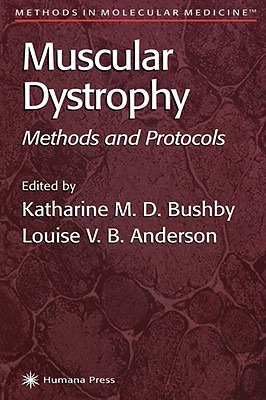
- We will send in 10–14 business days.
- Publisher: Humana
- ISBN-10: 0896036952
- ISBN-13: 9780896036956
- Format: 16.2 x 23.6 x 3.2 cm, hardcover
- Language: English
- SAVE -10% with code: EXTRA
Muscular Dystrophy (e-book) (used book) | bookbook.eu
Reviews
Description
The term "muscular dystrophy" (MD) describes a group of primary genetic disorders of muscle that often have a distinctive and recognizable clinical p- notype, accompanied by characteristic, but frequently not pathognomonic, pathological features. Research into the molecular basis of the MDs by a c- bination of positional cloning and candidate gene analysis has provided the basis for a reclassification of these disorders, with genetic and protein data augmenting traditional clinically based nomenclature. These findings have brought insights into the molecular pathogenesis of MD, with an increasing number of potential pathways involved in arriving at a dystrophic phenotype. Some common themes can be recognized, however, including the involvement of five members of the dystrophin-associated complex (dystrophin and four sarcoglycans) in different types of MD, and the involvement of two nuclear envelope proteins in producing an Emery-Dreifuss MD phenotype. Other d- ease-associated genes appear to cause MD in a completely unrelated way, such as the involvement of calpain 3 in a form of limb-girdle muscular dystrophy. Section 1 of Muscular Dystrophy: Methods and Protocols reviews tra- tional strategies used to identify MDs. Meantime, techniques developed as a result of the research strategies described previously have become an integral part of the management of many patients with MD and their families, and these techniques are addressed in Sections 2 (DNA-based tests) and 3 (p- tein-based analyses). The continued effort to translate this enhanced und- standing into a molecular cure or treatment for MD is reviewed in Section 4.
EXTRA 10 % discount with code: EXTRA
The promotion ends in 19d.06:37:45
The discount code is valid when purchasing from 10 €. Discounts do not stack.
- Publisher: Humana
- ISBN-10: 0896036952
- ISBN-13: 9780896036956
- Format: 16.2 x 23.6 x 3.2 cm, hardcover
- Language: English English
The term "muscular dystrophy" (MD) describes a group of primary genetic disorders of muscle that often have a distinctive and recognizable clinical p- notype, accompanied by characteristic, but frequently not pathognomonic, pathological features. Research into the molecular basis of the MDs by a c- bination of positional cloning and candidate gene analysis has provided the basis for a reclassification of these disorders, with genetic and protein data augmenting traditional clinically based nomenclature. These findings have brought insights into the molecular pathogenesis of MD, with an increasing number of potential pathways involved in arriving at a dystrophic phenotype. Some common themes can be recognized, however, including the involvement of five members of the dystrophin-associated complex (dystrophin and four sarcoglycans) in different types of MD, and the involvement of two nuclear envelope proteins in producing an Emery-Dreifuss MD phenotype. Other d- ease-associated genes appear to cause MD in a completely unrelated way, such as the involvement of calpain 3 in a form of limb-girdle muscular dystrophy. Section 1 of Muscular Dystrophy: Methods and Protocols reviews tra- tional strategies used to identify MDs. Meantime, techniques developed as a result of the research strategies described previously have become an integral part of the management of many patients with MD and their families, and these techniques are addressed in Sections 2 (DNA-based tests) and 3 (p- tein-based analyses). The continued effort to translate this enhanced und- standing into a molecular cure or treatment for MD is reviewed in Section 4.


Reviews